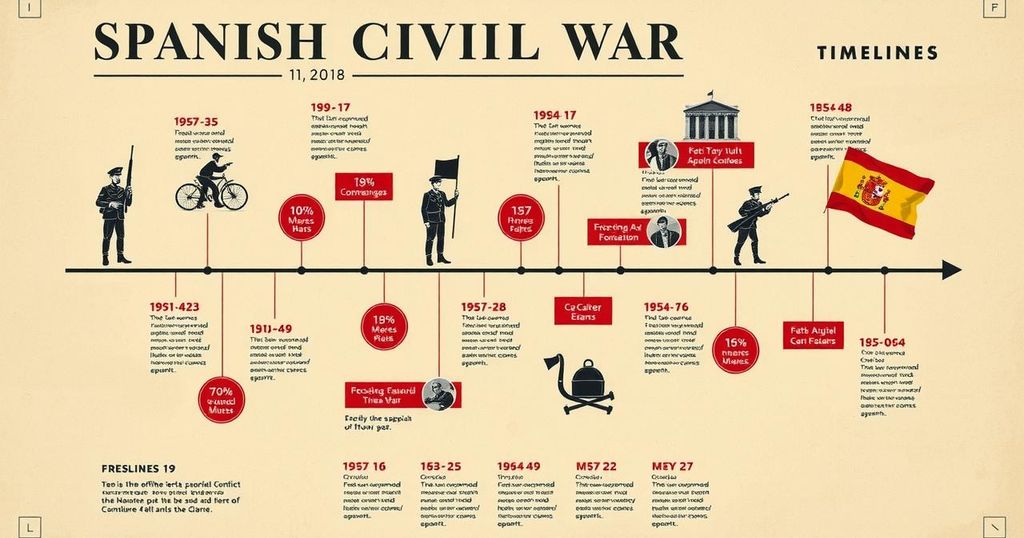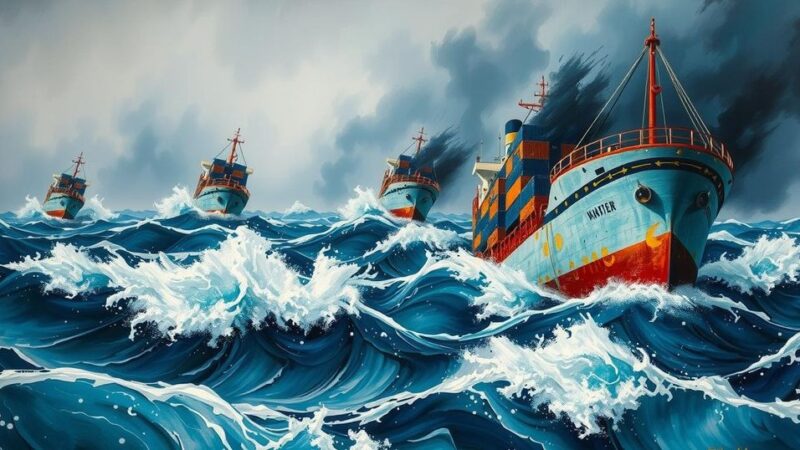The Spanish Civil War started in 1936 as a coup but turned into a lengthy conflict until 1939, resulting in profound political turmoil and loss of life. This article outlines significant events leading to the war, the key players involved, and the eventual establishment of Franco’s dictatorship after the conflict.
The Spanish Civil War kicked off in 1936, initially as a military coup but morphed into a horrific proxy war that stretched until 1939 and resulted in the deaths of countless individuals. This timeline captures some of the pivotal moments that shaped this devastating conflict.
On May 17, 1902, Alfonso XIII ascended to the Spanish throne at a mere sixteen years of age. The young king, eager to wield his influence, intervened frequently in parliamentary matters, which triggered political upheaval and instability that led to the formation of 33 governments in just over two decades.
Fast forward to July 22, 1921: the Spanish garrison at Annual in Morocco faced a catastrophic defeat at the hands of Berber forces led by Abd el-Krim. This blunder would mark Spain’s most significant humiliation against indigenous forces, often recalled as the Rif War and an indicator of Spain’s waning colonial power.
Then, on September 13, 1923, General Miguel Primo de Rivera executed a coup d’état with the backing of Alfonso XIII, thus dismantling the parliamentary government. This brought about a dictatorship that alienated many and stirred resentment toward the monarchy within Spain, which would later come to haunt the king.
Alfonso XIII eventually forced Primo de Rivera to resign on January 28, 1930, largely due to the crushing effects of the global depression. In the wake of his resignation, growing Republican sentiments led to a conference at San Sebastián, where an agreement was forged to overthrow the king.
On April 12, 1931, municipal elections yielded sweeping victories for Republican and Socialist candidates, compelling Alfonso to abdicate. As the military retracted its support for him, Alfonso fled the country just two days later, signaling the end of monarchy and the start of a republic.
Things took a turn on October 29, 1933, when José Antonio Primo de Rivera founded the far-right Falange Española, echoing fascist ideals and seeking to dismantle the new Republic. Initially lacking public support, the Falange relied heavily on financial backing from Mussolini’s Italy to gain a foothold.
Come February 16, 1936, the Popular Front coalition, led by Manuel Azaña, seized the parliamentary majority. However, their rule was fraught with unrest as there were many strikes, and massive arson incidents targeting churches and media outlets began to escalate tensions between political factions.
Things took a dramatic turn on July 17, 1936, when the assassination of rightist leader José Calvo Sotelo ignited a military counter-movement. General Francisco Franco pronounced the uprising from the Canary Islands, and the conflict soon transmuted into a civil war as Nationalists attempted to overthrow the government but fell short of capturing the capital, Madrid.
As the war wore on, the first wave of International Brigades arrived in Spain by October 14, 1936, and would eventually see about 60,000 foreign volunteers fighting for the Republicans. Meanwhile, Franco’s Nationalists enjoyed support from Italy and Nazi Germany, even as those nations pledged nonintervention.
Nationalist troops reached the outskirts of Madrid on November 6, 1936. Expecting an easy victory, they instead encountered fierce resistance, igniting a protracted siege that would ensue for over two years. On November 20, 1936, the executed commander, Primo de Rivera, became a martyr for the Nationalist cause.
On April 26, 1937, the Basque town of Guernica faced devastating air raids by the Luftwaffe, killing hundreds of civilians. This brutal display of aerial bombing showcased effective terror tactics and triggered a symbolic response in the art world, particularly with Picasso’s famed painting.
Bilbao fell to the Nationalists on June 19, 1937, effectively tightening their grip on northern Spain, but cities like Barcelona and Madrid remained elusive. By November 18, 1938, relentless fighting led to a tipping point at the Battle of the Ebro, marking a significant defeat for the exhausted Republican forces.
The war culminated on March 28, 1939, when approximately 200,000 Nationalist troops marched into an unresisting Madrid, as the Republican government had already fled weeks earlier. The war, lasting about two years and nearly nine months, left a harrowing toll of up to one million lives lost due to combat and starvation. Franco emerged victorious, establishing a dictatorship that would linger until his death in 1975.
The Spanish Civil War, ignited by a military coup in 1936, evolved into a devastating conflict leading to significant casualties and political turmoil. Key moments marked this war: the fall of the monarchy, rise of leftist and rightist factions, foreign intervention, and the eventual establishment of Franco’s dictatorship. Ultimately, the conflict resulted in a staggering loss of life and deep societal scars in Spain.
Original Source: www.britannica.com






